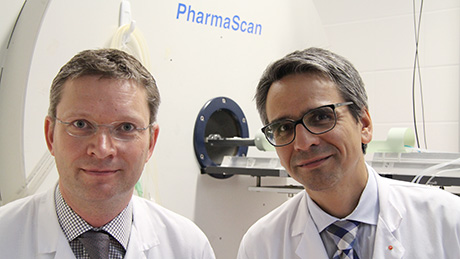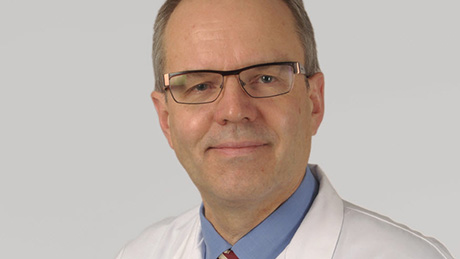Navigation auf uzh.ch
Navigation auf uzh.ch

Every day, physicians at the University Hospital Zurich Division of Urology treat patients suffering from incontinence. In Switzerland this affects around 20 percent of women over age 50, and a substantial number of men. Translated into figures, between 300 and 400 thousand people in this country have a “weak bladder,” and are not always able to hold the urine back. These are only rough figures, and the real number is probably a lot higher. Because women have a broader pelvis and comparatively weak pelvic floor muscles – further weakened when they give birth – they are much more likely to suffer from incontinence than men. The main trigger of stress incontinence in men is injury or surgery to the pelvic area, including prostate operations.
“A weak bladder often has its origins in weak muscle tissue. People can leak urine when coughing or physical exertion put a strain on the sphincter, the muscle that controls the urine flow,” explains Daniel Eberli. Together with fellow UZH Privatdozent Andreas Boss, he heads a research group under the Molecular Imaging Network Zurich Clinical Research Priority Program (“CRPP MINZ” for short). “If we could strengthen or even replace this muscle tissue, we could solve the problem of uncontrolled urination.” Andreas Boss is a radiologist and imaging expert. The two researchers are working with medical specialists at the Division of Urology and the Institute of Diagnostic and Interventional Radiology on a therapy that could in the long run help people with incontinence.
Eberli is developing new muscle tissue for the pelvic floor from stem cells, with the aim of strengthening the relevant muscle in the pelvic floor and preventing incontinence. In principle, stem cells can differentiate into any type of cell. One of the reasons this clever trick isn’t used in routine clinical practice is that it’s difficult to position the new tissue at precisely the right location in the body and ensure that muscle tissue rather than fat or some other type of tissue will be formed from the stem cells.
The research team has used mice to develop a technique for creating mouse muscle cells from mouse stem cells, and implanting them back into the animals. With some success. But it’s difficult for the scientists to see whether the new muscle tissue is fixed at the right place in the pelvic floor and whether it has integrated properly with the existing muscle tissue. “This is where imaging comes in,” says Andreas Boss. He’s working with images produced by magnetic resonance tomography to identify the new muscle tissue. “You need a lot of experience to interpret the imaging parameters correctly,” he explains, adding that it’s also difficult to capture processes (in other words, the growth of tissue) in images.
It’s still a long way off, but if the pure researchers around Daniel Eberli and Andreas Boss are successful, their knowledge will feed back into clinical therapy. Stem cells from patients could be used to culture muscle tissue that could be injected into the weakened pelvic floor muscle tissue to generate new muscle. This would also eliminate the cause of incontinence.
The idea of teams consisting of a clinician and a pure researcher working in tandem is the hallmark of the MINZ CRPP. Eleven tandem teams ensure that clinical experience gained by one of the partners feeds into the other’s lab work, and vice versa. MINZ has has been successfully putting this idea into practice since its inception three years ago.

MINZ brings various institutes involved in imaging and pure research together with clinical practitioners. While the institutes are working on different projects, the problems they face are in some cases related, explains Jürg Hodler, Medical Director of Radiology, who co-directs MINZ together with Markus Rudin at ETH Zurich. For Hodler it’s particularly important for the various research groups to meet regularly to share their work, and for young researchers to be involved.
He’s convinced that MINZ will help make radiology attractive for up-and-coming scientists and spark enthusiasm for the field. Young researchers also receive systematic support. For example, medical specialists are given a year off routine clinical duties to be able to devote themselves fully to their lab research. Hodler also believes it’s easier to get outside funding by presenting yourself as a large institution. But for him, the most important aspect of MINZ is the intensive contact between researchers and clinicians. This, he insists, is the only way of ensuring patients benefit from new insights.